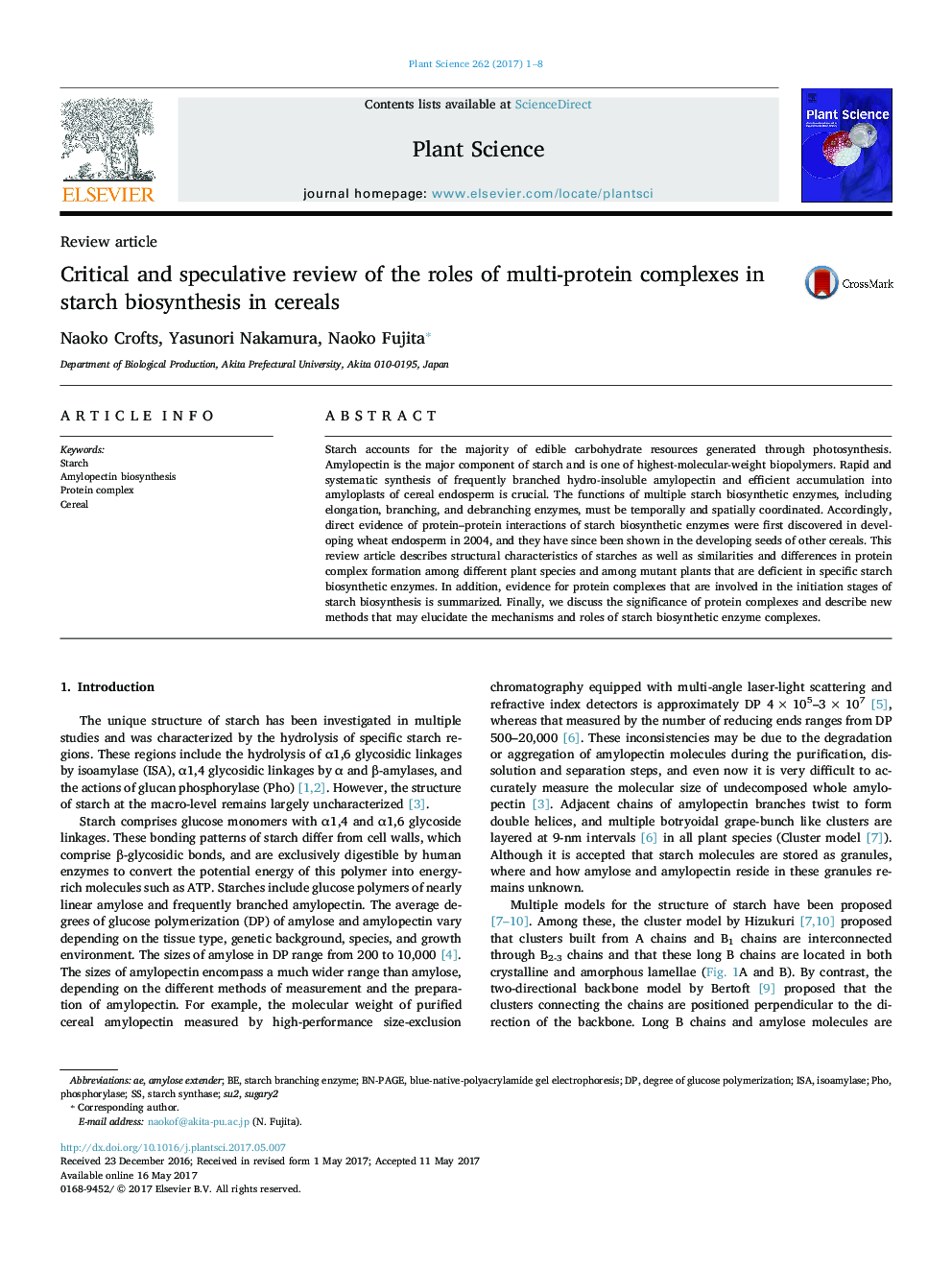| Article ID | Journal | Published Year | Pages | File Type |
|---|---|---|---|---|
| 5515728 | Plant Science | 2017 | 8 Pages |
â¢Protein-protein complex formation during starch biosynthesis.â¢Differences in starch biosynthetic protein complexes among cereals.â¢Starch biosynthetic protein complex formation in mutants.â¢Involvements of enzyme interactions in the initiation of starch biosynthesis.â¢Future perspectives and methods for analyzing functions of protein complexes.
Starch accounts for the majority of edible carbohydrate resources generated through photosynthesis. Amylopectin is the major component of starch and is one of highest-molecular-weight biopolymers. Rapid and systematic synthesis of frequently branched hydro-insoluble amylopectin and efficient accumulation into amyloplasts of cereal endosperm is crucial. The functions of multiple starch biosynthetic enzymes, including elongation, branching, and debranching enzymes, must be temporally and spatially coordinated. Accordingly, direct evidence of protein-protein interactions of starch biosynthetic enzymes were first discovered in developing wheat endosperm in 2004, and they have since been shown in the developing seeds of other cereals. This review article describes structural characteristics of starches as well as similarities and differences in protein complex formation among different plant species and among mutant plants that are deficient in specific starch biosynthetic enzymes. In addition, evidence for protein complexes that are involved in the initiation stages of starch biosynthesis is summarized. Finally, we discuss the significance of protein complexes and describe new methods that may elucidate the mechanisms and roles of starch biosynthetic enzyme complexes.
